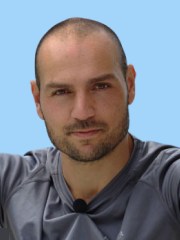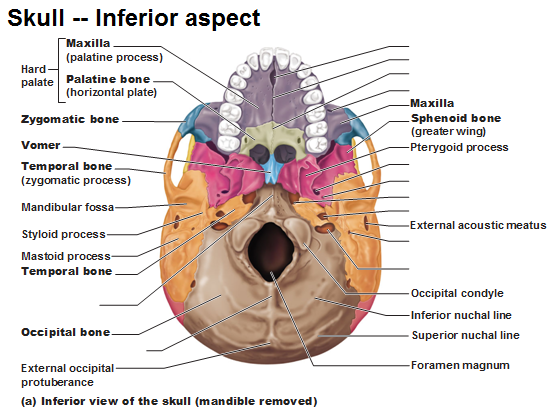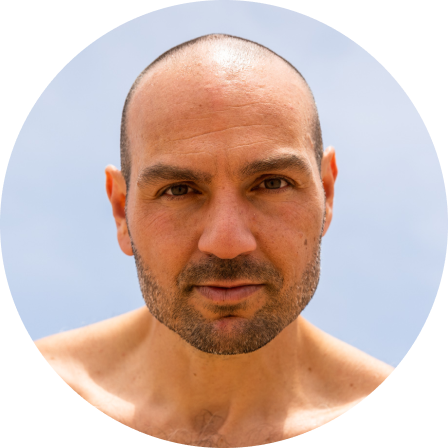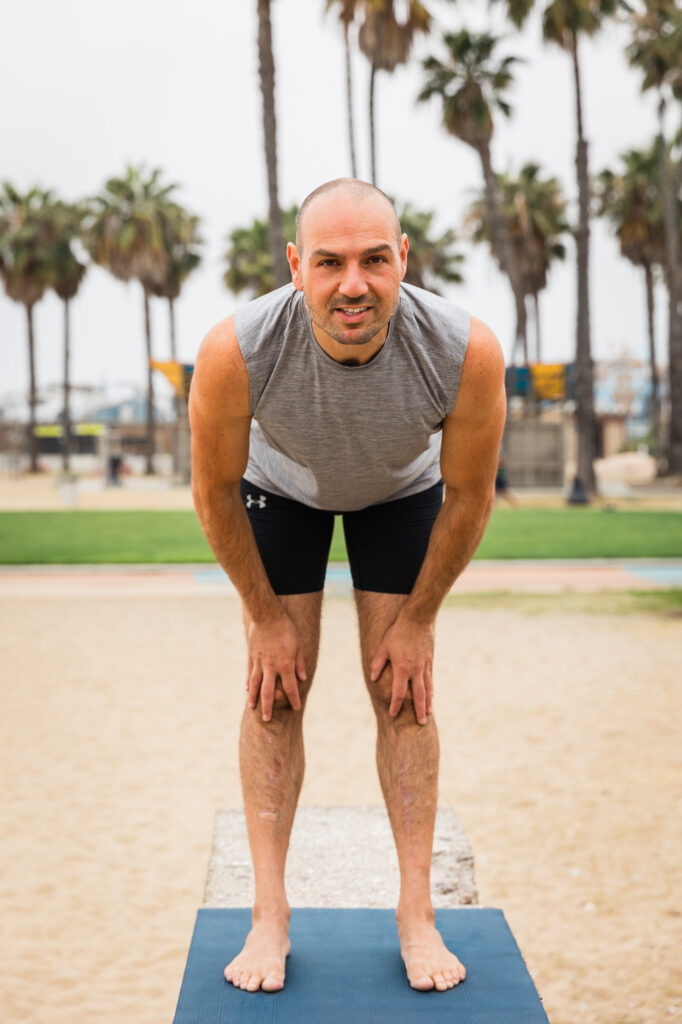Geography of the Skull
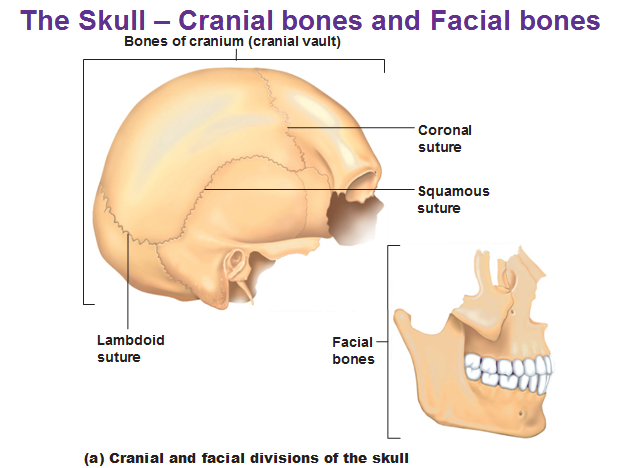
Let’s start with the Skull… the worse part.. I mean, the most complicated of all the bones we will go over… The skull contains an astounding 85 openings in the form of foramina, canals and fissures. They provide passageways for the spinal cord, blood vessels, 12 pairs of cranial nerves and so on.
Overview of Skull Geography

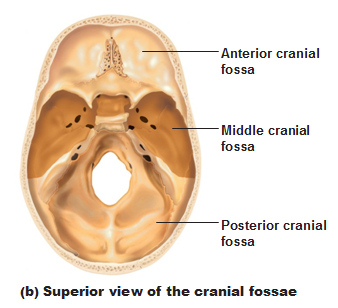
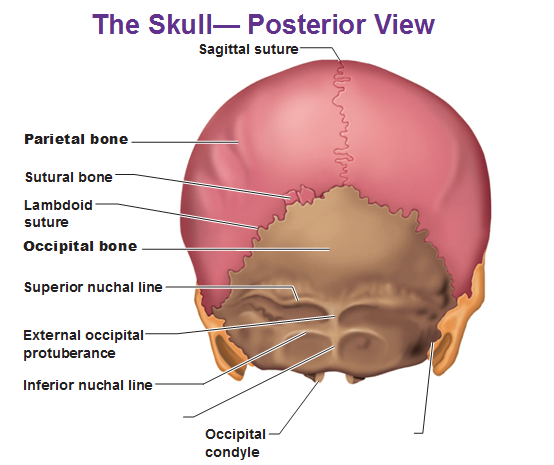
The parietal bone is actually 2 separate bones that got fused together with the sagittal suture. It’s easy to remember sagittal cause of the mid-sagittal plane that runs right in the middle of you that splits you symmetrically. The sutures are not fused in babies to allow for the brain to grow. The lambdoid suture is named after the greek letter Lambda because it looks like the letter coming off the sagittal suture: λ
The occipital bone is the back that goes down. The word nuchal refers to the neck/nape. So we have the superior and inferior nuchal lines, those are pretty easy. The external occipital protuberance is literally just the protrusion between the nuchal lines. The occipital condyle is easy to remember if you know that a condyle is a rounded projection (like a process) that ligaments attach to. Condyle in latin means “knuckle.”
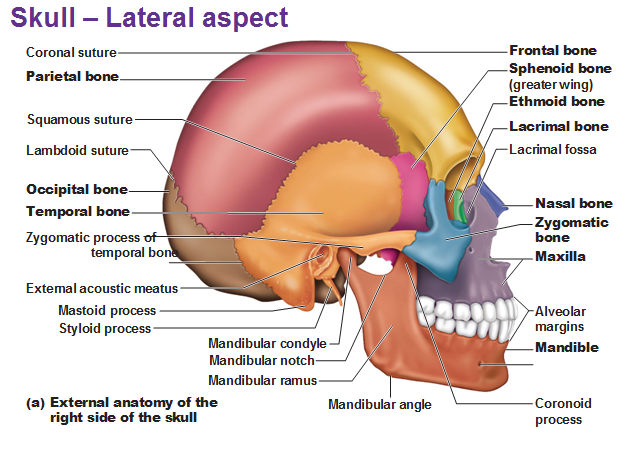 Temporal bone… where your temple is.
Temporal bone… where your temple is.
Your ear goes right on top of this external acoustic meatus. Meatus is another word for a hole, or more specifically, a natural opening to the body. Directly behind that is the mastoid process. This can be felt as the hard bone behind your ear and funny enough, mast means breast in latin, so the mastoid process is apparently named that because it’s shaped like a boob. The styloid process is below the E.A. meatus that looks like a toothpick (stylus pen).
The Zygomatic process of the temporal bone is what leads into the zygomatic bone. Zygomatic comes from the word zygote which means fused because the zyomatic bone is what bonds the maxilla, temporal and the frontal bones.
The Mandibular fossa is a fossa on the temporal bone where the jaw connects. It’s just in front of the E.A. meatus and is what the mandibular condyle fits into.
The mandible is the jaw.
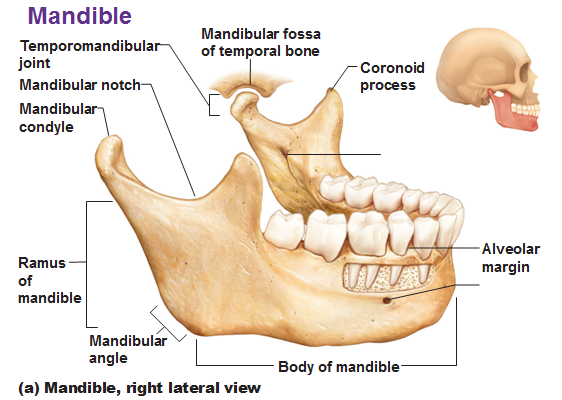 The ramus of the mandible is the upper part of the jaw, above the mandibular angle. The body is below the mandibular angle, toward the chin.
The ramus of the mandible is the upper part of the jaw, above the mandibular angle. The body is below the mandibular angle, toward the chin.
Anterior to the mandibular condyle is the mandibular notch and anterior to that is the coronoid process. The coronoid proess doesn’t attach to another bone but muscle. The alveolar margins are where the teeth go. Alveolar in latin means hollow (like alveolar air sacs) which are the empty sockets that the teeth go into.
The mental protuberance (not labeled) is the chin. The word mental is used for the chin because mentum in latin means chin.
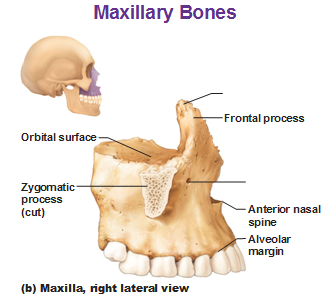 Right under the nose is the maxilla.
Right under the nose is the maxilla.
The anterior nasal spine is right under the nostril.
The frontal process leads to the frontal bone. The maxilla goes very deep in your face and is very 3 dimensional. The nasal bone forms the actual bridge of your nose right at the top. If you break your nose, this is what breaks. The orbital surface, is that large somewhat orbital shape.
Follow the picture below: The occipital bone starts on the back of your head and continues down to form the bottom. The foramen magnum (large hole) is where the spinal cord goes through, clearly. The anterior side of the foramen magnum has the occipital condyles. The occipital condyles are very obvious in their function as they are what the superior facets of the atlas articulate together with.
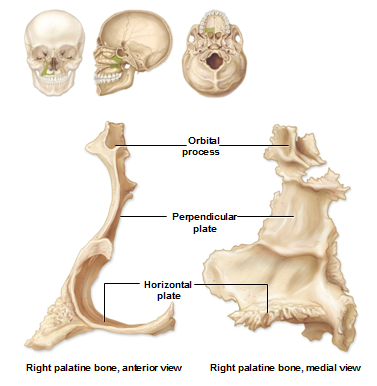 Above is the palatine bone: The palate is the roof of the mouth and the palatine process (not shown)forms the anterior 2/3rd while the palatine bone forms the posterior 1/3rd of the jaw that is made up of the horizontal plate. The perpendicular plate shoots up perpendicularly (surprise!) from the horizontal plate and the orbital plate shoots up to the eye.
Above is the palatine bone: The palate is the roof of the mouth and the palatine process (not shown)forms the anterior 2/3rd while the palatine bone forms the posterior 1/3rd of the jaw that is made up of the horizontal plate. The perpendicular plate shoots up perpendicularly (surprise!) from the horizontal plate and the orbital plate shoots up to the eye.
Sphenoid bone (sphen- means wedge-shaped)
The sphenoid bone makes up a lot of the inside of the skull. It looks like it is made of 2 sets of wings. One is the lesser wing and the other is the greater wing. The lesser is smaller than the greater, DUH.
The sella turcica (turkish saddle) is the spot where the pituitary gland goes. It’s extremely protected with all the bone tissue around it.
The pterygoid process is that piece that extends down from the posterior side. (ptery=wing, -goid=like something, so wing like, just like pterodactyl is a winged dinosaur).
The superior orbital fissure is next to the optic canal which is next to the inferior orbital fissure.
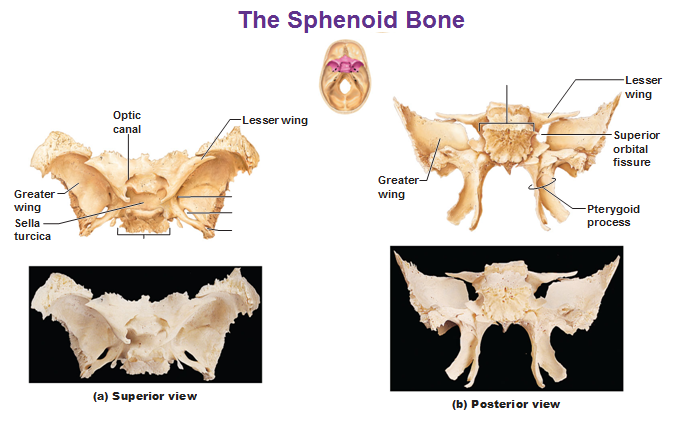
The Ethmoid bone (ethmos=sieve, mesh-like)
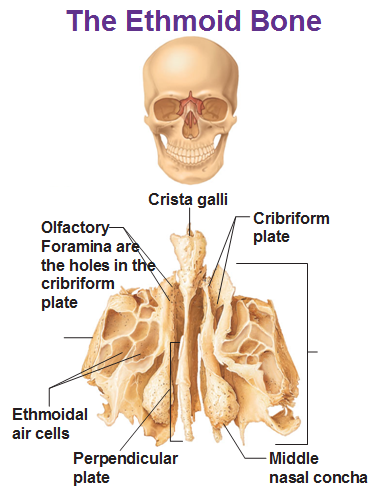 The ethmoid bone is a tiny bone that has tiny little holes such as the olfactory foramina.
The ethmoid bone is a tiny bone that has tiny little holes such as the olfactory foramina.
The whole horizontal plate is called the cribriform plate that the holes are in.
The center is called the crista galli and is more solid.
The superior and middle and inferior nasal concha are twirly to create turbulence so the mucus could better trap the air and warm it before it enters the lungs.
Use this Table of Contents to go to the next article
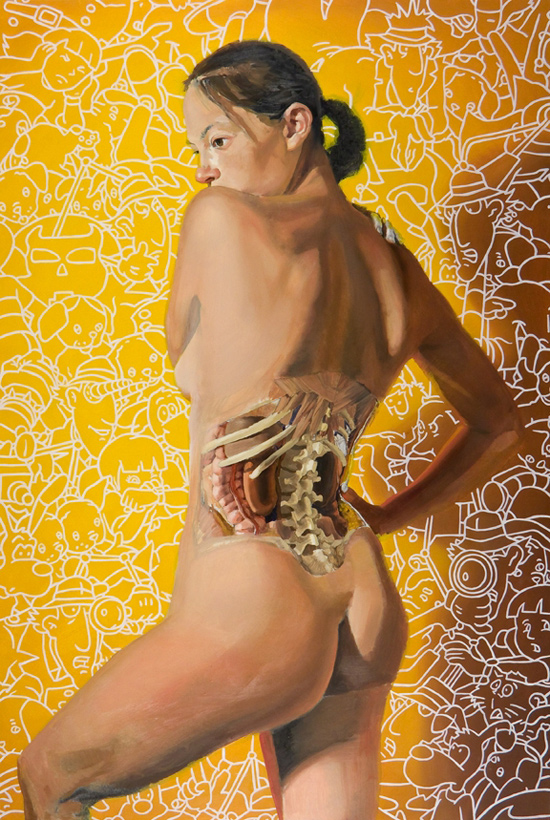
YOU ARE HERE AT THE SKELETAL SYSTEM
